Nestled beneath the historic city of Nuremberg lies the Historischer Kunstbunker, a captivating subterranean sanctuary that offers a unique glimpse into the past. Once a secret bomb shelter used during WWII to safeguard the city’s priceless artworks, this expansive tunnel complex now stands as a testament to Nuremberg’s resilience. Visitors can explore the remarkable rescue operation that protected masterpieces by renowned artists, and uncover the ingenious measures taken to preserve the region’s cultural heritage in the face of devastating wartime destruction. The story of the Historischer Kunstbunker is a compelling one, revealing how a city’s determination can triumph over the ravages of conflict.
Key Points
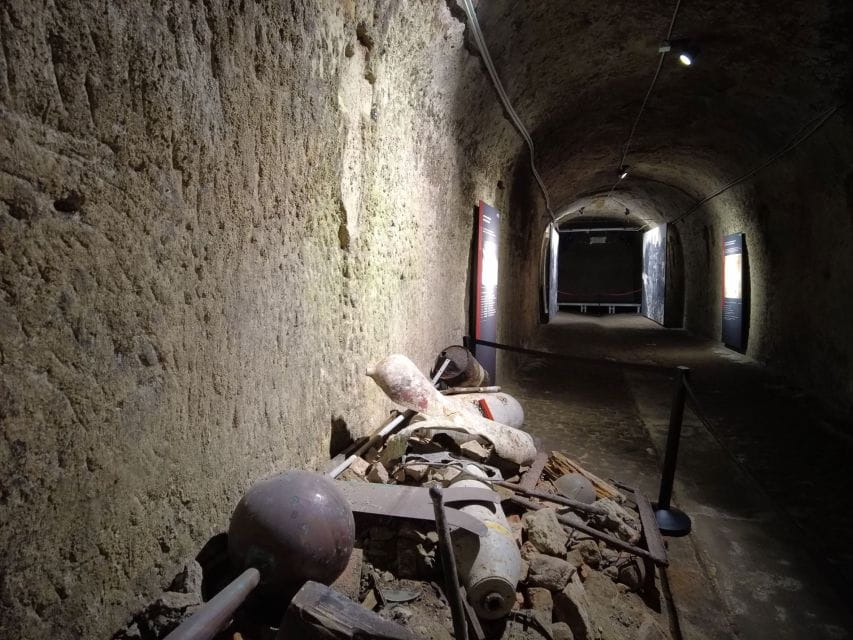
- The Historischer Kunstbunker is an expansive tunnel complex beneath Nuremberg Castle that served as a bomb shelter to protect priceless artworks during WWII.
- The bunker housed masterpieces by renowned artists like Albrecht Dürer and the Veit Stoss Altarpiece, preserving Nuremberg’s cultural heritage.
- Guided tours of the bunker provide insight into the remarkable rescue operation that saved these artworks and explore the tunnel complex’s history.
- Nuremberg was heavily bombed during WWII, with 90% of the Old Town reduced to rubble, and the city later underwent a painstaking reconstruction effort.
- The Historischer Kunstbunker stands as a testament to Nuremberg’s resilience and determination to safeguard its cultural heritage in the face of wartime devastation.
Tour Overview
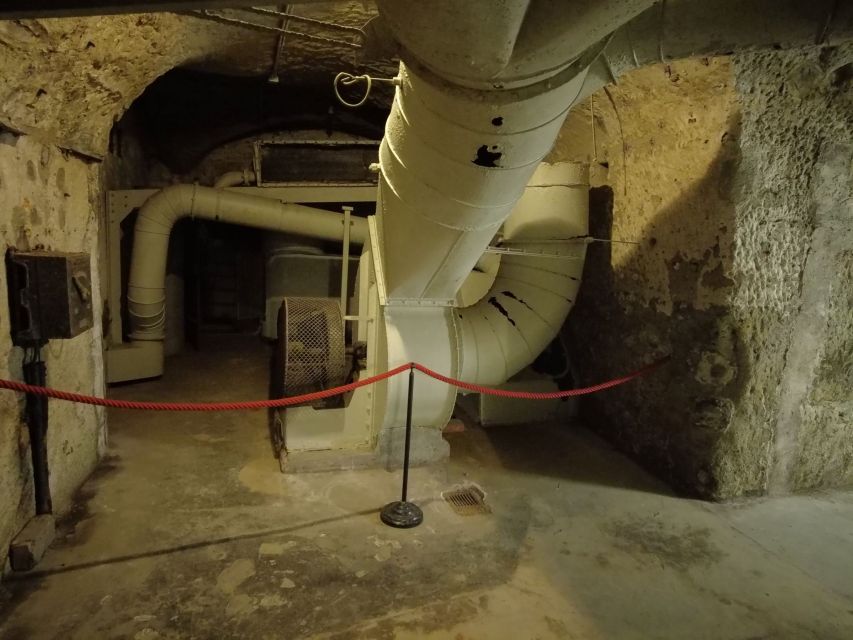
The Historischer Kunstbunker in Nuremberg’s Old Town offers a guided tour that typically lasts one hour and is available in both German and English.
During this captivating experience, visitors will explore the vast tunnel complex underneath Nuremberg Castle, which was once used as a bomb shelter to protect priceless artworks during World War II.
The tour provides a unique opportunity to discover how this converted cellar played a crucial role in safeguarding masterpieces by renowned artists like Albrecht Dürer, the Altarpiece of Veit Stoss, and the Codex Manesse.
Visitors will explore the historical context, learning about Nuremberg’s devastation and subsequent reconstruction in the aftermath of the war.
Fascinated by Nuremberg's past? More historical tours we've covered
About the Historischer Kunstbunker
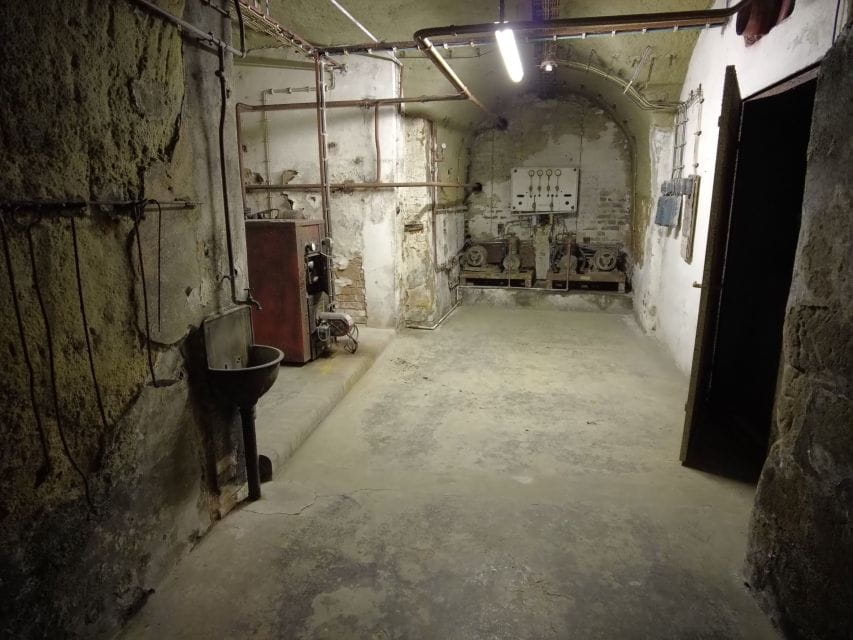
Beneath the towering Nuremberg Castle lies the expansive Historischer Kunstbunker, a vast tunnel complex that once served as a bomb shelter during World War II. This converted cellar was used to protect priceless artworks, including masterpieces by Albrecht Dürer, the Altarpiece of Veit Stoss, and the renowned Codex Manesse. The bunker’s cavernous spaces once housed beer-making operations in medieval times before taking on its wartime role.
| Purpose | Timeline | Key Artworks Protected | Capacity |
|---|---|---|---|
| Bomb shelter | WWII | Dürer, Veit Stoss, Codex Manesse | Unknown |
The Historischer Kunstbunker stands as a testament to Nuremberg’s efforts to safeguard its cultural heritage during the devastating bombings that reduced much of the medieval Old Town to rubble.
Historical Context
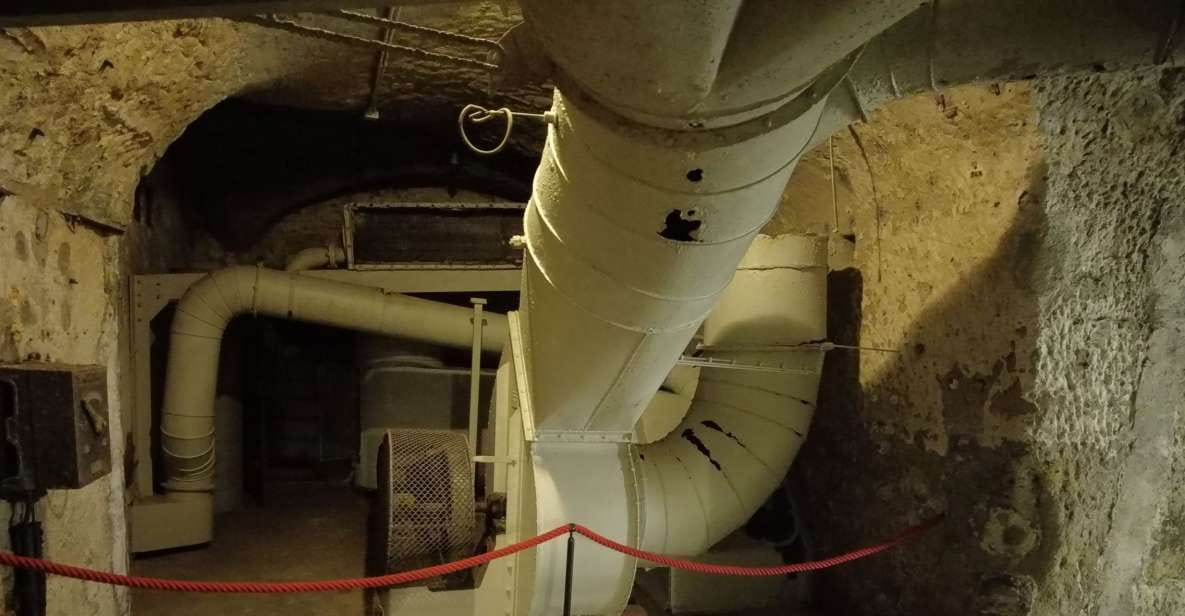
During the Second World War, Nuremberg was heavily bombed and suffered extensive damage, with 90% of its medieval Old Town reduced to rubble.
The city was a strategically important location for the Nazis, and it was the site of the infamous Nuremberg Trials after the war.
Despite the devastation, Nuremberg was later rebuilt, with great effort taken to restore the city’s historic buildings and infrastructure.
Today, the city is a popular tourist destination, known for its well-preserved old town, impressive castle, and rich cultural heritage.
The Historischer Kunstbunker, where priceless artworks were stored during the war, is a testament to Nuremberg’s resilience and its commitment to preserving its past.
Tour Highlights
Visitors typically begin their tour by discovering how the cellar was used to store beer in medieval times, before it was converted into a bomb shelter to protect valuable artworks during World War II. Here, they learn about the remarkable rescue operation that saved priceless masterpieces like Albrecht Dürer’s works, the Altarpiece of Veit Stoss, and the Codex Manesse from the bombings that devastated Nuremberg.
| Tour Highlights |
|---|
| Discover the cellar’s medieval beer storage past |
| Learn about the rescue operation that saved artworks |
| Explore the network of tunnels with a local guide |
| Marvel at the masterpieces once housed in the bunker |
| Appreciate the historical context of Nuremberg’s WWII destruction |
Practical Details
The tour offers free cancellation up to 24 hours in advance, allowing visitors the flexibility to adjust their plans as needed. Guests can reserve their spot now and pay later, a convenient option for those planning their Nuremberg itinerary.
However, the tour may not be suitable for people with mobility impairments, claustrophobia, or wheelchair users due to the underground tunnels.
The tour highlights include:
- Discovering the cellar’s use as a medieval beer storage facility.
- Learning about the rescue operation that saved priceless artworks.
- Exploring the expansive network of tunnels with a knowledgeable local guide.
Exploring the Tunnel Complex
Descending into the vast tunnel complex beneath Nuremberg Castle, visitors embark on a captivating journey through the Historischer Kunstbunker‘s storied past.
The network of tunnels, once used to store beer in medieval times, took on a new purpose during World War II.
Visitors will explore this labyrinth of underground chambers, learning how the cellar was converted into a bomb shelter to protect priceless artworks, including masterpieces by Albrecht Dürer and the Altarpiece of Veit Stoss.
With the guidance of a local expert, guests will uncover the remarkable history of this subterranean sanctuary, marveling at the ingenuity and determination that saved Nuremberg’s cultural heritage from the devastating bombings that destroyed much of the city above.
Preserving Priceless Artworks
As the tunnels beneath Nuremberg Castle had once provided a safe haven for beer storage, they’d now serve an even more vital purpose: sheltering the city’s most prized artistic treasures from the devastation of World War II. When the bombing raids began, a daring rescue operation was launched to relocate masterpieces by renowned artists like Albrecht Dürer, the Altarpiece of Veit Stoss, and the Codex Manesse to the safety of the underground bunker.
This remarkable effort ensured that these priceless cultural artifacts were preserved for future generations. The Historischer Kunstbunker, with its network of tunnels, played a crucial role in safeguarding Nuremberg’s artistic heritage during the darkest days of the war.
- Sheltered masterpieces by renowned artists like Albrecht Dürer
- Secured the Altarpiece of Veit Stoss and the Codex Manesse
- Served as a vital sanctuary during the bombing raids of WWII
Nuremberg’s Postwar Reconstruction
After the war, Nuremberg faced the daunting task of rebuilding its medieval Old Town, which had been devastated by the bombings, with 90% of the historic district reduced to rubble. The city embarked on a major reconstruction effort to restore its iconic architecture and cultural heritage, painstakingly rebuilding the war-torn structures to reclaim Nuremberg’s historic charm.
| Rebuilding Nuremberg | ||
|---|---|---|
| Restoration Goals | Timeline | Funding |
| Preserve historic architecture | 1950s-1970s | Government grants, private donations |
| Recreate medieval ambiance | Decades-long process | Extensive planning and coordination |
| Revive cultural landmarks | Ongoing maintenance | Public-private partnerships |
The reconstruction of Nuremberg’s Old Town was a remarkable feat, showcasing the city’s resilience and determination to preserve its rich history for generations to come.
Frequently Asked Questions
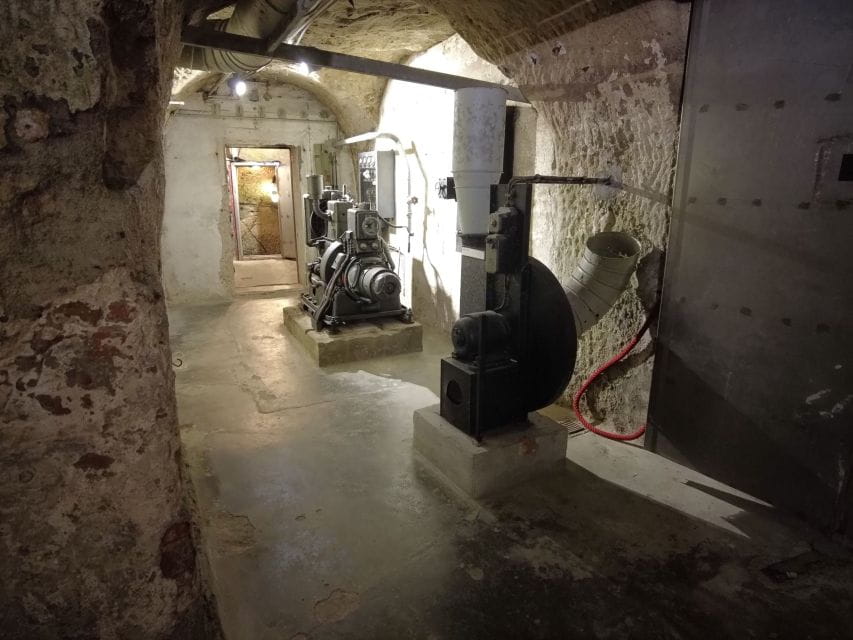
Is the Tour Wheelchair Accessible?
The tour is not wheelchair accessible. The tour involves exploring a network of narrow tunnels, which may be difficult for those with mobility impairments. The tour is not suitable for wheelchair users.
Can Visitors Take Photos Inside the Bunker?
Visitors are generally allowed to take photos inside the bunker, but flash photography is prohibited. The guides request that guests refrain from using tripods or other intrusive equipment to preserve the historical ambiance and protect the delicate artifacts on display.
What Is the Minimum Age Requirement for the Tour?
There is no minimum age requirement for the Historischer Kunstbunker tour. The tour is open to visitors of all ages, though it may not be suitable for young children due to the underground nature of the experience.
Are Refreshments Provided During the Tour?
The tour does not include any refreshments. Visitors will need to bring their own water or snacks, as there are no food or beverage services provided during the 1-hour guided exploration of the Historischer Kunstbunker.
Can Visitors Purchase Souvenirs at the End of the Tour?
Visitors can purchase souvenirs at the end of the tour. The Historischer Kunstbunker offers a selection of items related to the wartime art bunker and Nuremberg’s history for visitors to take home as mementos of their experience.
Recap
The Historischer Kunstbunker in Nuremberg stands as a poignant reminder of the city’s resilience during WWII.
Its expansive tunnels once housed a remarkable rescue operation that safeguarded priceless artworks, including masterpieces by renowned artists.
Today, this subterranean sanctuary offers visitors a captivating glimpse into Nuremberg’s wartime past and the ingenuity that preserved its cultural heritage amidst the devastation of the time.
More Historical Tours in Nuremberg
More Tours in Nuremberg
- Nuremberg: Tunnels and Secret Passages in the City Wall Tour
- Stein: Public guided tour of the “Old Mine” museum
- Old Town Nuremberg: Historical tour with a local guide
- Tour en español al Campo Zeppelin
- Nuremberg:Complete Tour! Castle/Old Town/World War history
- Nuremberg Old Town and Nazi Rally Grounds Walking Tour
More Tour Reviews in Nuremberg
- Nuremberg: 1-day ticket Germanisches Nationalmuseum
- Nuremberg: Castle and Old Town Tour – incl. admission tickets and red beer tasting
- Nuremberg Private Premium Tour with Night PubCrawl
- Nuremberg: Historical Rock Cellars Tour
- Nuremberg: Theater Tour “The Executioner’s Wife”
- Nuremberg: 3-Hour St. Johannis Food Tour in German
Not for you? Here's more things to do in Nuremberg we have recnetly reviewed
- Nürnberg: Scavenger Escape Room Experience: Gangsta’s Cage
- Nürnberg: Secret Surgery Escape Room Game
- Tour del tercer Reich por Núremberg en español
- Nuremberg: Art and Culture revealed by a Local
- Nuremberg’s Mystery Morning: Breakfast & Escape Game
- Nuremberg: The Old Town in Evening Light – IN GERMAN
- Nuremberg: Guided BYO Bike Tour
- Nuremberg: Theater Tour “Of nightwatchmen, executioners, and nymphs”
- Nürnberg: Prison Break Escape Room
- Nuremberg: Medieval Time Travel for Kids
- Nuremberg Christmas 3-Hour Christkindles market Walking Tour
- Nuremberg – Old town Historic Walking tour
